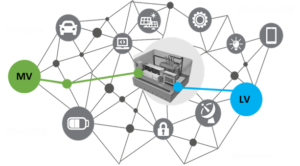Author: – ZIV –
In the past, Electrical Power and Energy System (EPES) substation networks were traditionally isolated, and the data formats used to transmit information between devices were often proprietary. Therefore, the substation environment was very safe from cyberattacks.
The increasing sophistication of protection devices on the electric grid, together with the advancement of technology and the need for interoperability, have resulted in a standardization of networks and data exchange in substations. In addition, substations can connect to open networks. This introduces a greater security risk, making the network vulnerable to cyberattacks, which could result in a higher electrical failure rate. Clearly there is now a need to secure communications and devices in substations.
Cybersecurity provides protection against unauthorized disclosure, transfer, modification or destruction of information or information systems, whether accidental or intentional. To achieve this, there are several mechanism such as encripted communication protocols, secure authentication and access control, secure firmware update and secure real-time cyberattack events transmission methods.
he CyberSEAS proyect aims to protect devices installed on EPES secondary susbtations. In that scope, several cybersecurity mechanisms have been implemented and tested:
- Role Based Access Control (RBAC).
- Remote User Authentication (LDAP and RADIUS protocols).
- Advanced Cybersecurity Events.
- Hardening: Disabling of Physical and Logical Ports.
- Use of Secure Sockets.
- Credential Management.
- Firmware Securization.
Additionally, interoperability with other components in the substation must be ensured.




